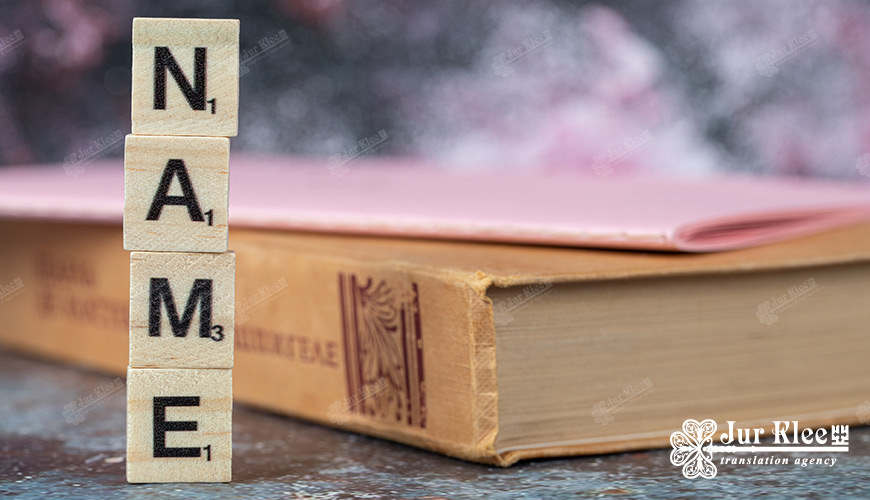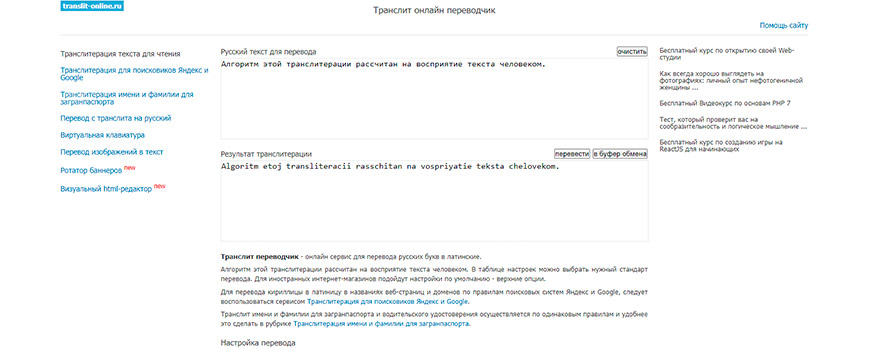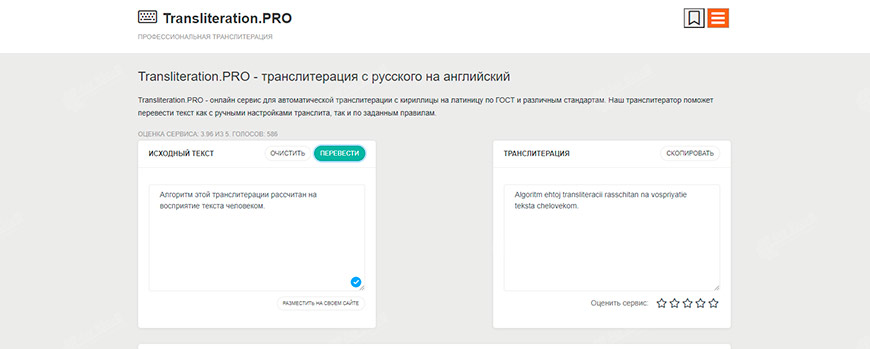
What you need to know about translation names into English?
Questions about the translation of the name arise not only for those who have minimal knowledge of the English language. Such a problem often makes to think even an experienced translator. In addition, such a situation can be explained by the rule according to which names are not translated, but transliterated.
Almost everything depends on the specifics of the translation context, its meaning and purpose:
- During the personal communication, it is sufficient a simple transliteration and the choice of the English version.
- Literary translation or informal communication usually involves the adaptation of the name by selecting an English-language analogue.
- In solving official issues, it is already necessary to resort to transliteration in accordance with the standards.
Most often, they try to find a way out by using the simplest of the options. To do this, you can look in your passport or other documents. It is possible to save time and effort preferring this approach. In addition, there will be no problems with creating a uniform translation for a number of papers. However, what to do in a situation when you have to do everything without anyone's help?
Transliteration on your own
In this case, the whole point is to try to repeat the Russian-speaking sound, i.e., type the name in the English alphabet. If you do not take into account the current standards, then it remains only to do everything at your own discretion. For informal communication and correspondence on the web, this option is quite suitable.
However, if you do not want to look illiterate, then the least you need is an understanding of English phonetics and knowledge of the 8 most popular rules according to which transliteration of individual letters of the Russian language is performed:
- Soft and hard signs have no analogy in English (Ольга – Olga). In some cases, these signs are replaced with an apostrophe, although this is not recommended.
- Transliteration of "Ы" and "Й", as well as the endings of "-ЫЙ" looks like "Y" (Латный – Latny).
- Given that the English "H" is sometimes omitted in pronunciation, it is replaced by "KH" (Харитонов – Kharitonov).
- For the correct combination of letters "KС", you should prefer the option "KS" rather than "X" (Ксюша – Ksusha).
- In the absence of a soft sign before "E", transliteration looks like "E", and with a soft sign, it is already necessary to prefer "YE". Both options are considered correct only when this letter is at the very beginning (Елена Васильевна – Yelena / Elena).
- It is recommended to write the letter "Ё" by analogy with "E". The "YO" option can be used only if necessary to emphasize the pronunciation (Ёжиков – Yozhikov).
- In relation to "Щ", the correct spelling is "SCH" or "SHCH" (Щукин – Schukin / Shchukin).
- The English variants "-IA" and "-IYA" are both considered correct in spelling the ending "-ИЯ" (Мария – Maria / Mariya).

When is it acceptable to turn the name Ivan into John
The presence of many common analogues of the same name is quite simple to explain by borrowing of foreign variants. However, despite the similarity in meaning, the use as a translation is questionable.
The adaptation of names is considered acceptable in the translation of belles-lettres. Such an approach is also common in training, when maximum immersion in the atmosphere and culture of native speakers is required. However, here we must remember about the likelihood of errors in the future due to getting used to adapted names.
Even in belles-lettres, it should not be so easy to change the name of a British young lady Kate on Katya. It will not only look strange, but it will also affect the meaning of the work. Therefore, it is necessary to take into account the context. This approach will be the only correct one in the case when it is planned to translate a fairy tale with talking names (Лунтик – Moonzy, Шалтай-болтай – Humpty Dumpty).
Transliteration based on standards
The only guide for the official spelling of names is strict adherence to standards. However, there are some contradictions here. Despite the fact that a specific transliteration option is prescribed for each letter, everything can be confused by the lack of a single translation option of Cyrillic into Latin. It is precisely the search for the optimal solution that makes even experienced translators interested in individual requirements and specify the institution for which the translation is intended.
If it is necessary to work with the documentation of Ukraine, the most popular is the official transliteration of the Ukrainian alphabet in Latin approved by the Resolution of the Cabinet of Ministers of Ukraine No. 55 dated January 27, 2010. It is this set of standards that is taken as the basis for the translation of names and surnames for foreign passports. In addition, as we already know, translators will continue to focus on the version in this document. For other cases where official requirements are not so important, any analogues may be suitable.
Not only tables from the Internet will help to facilitate the search for a solution regarding the transliteration of the name. The easiest way is to give preference to some service, a great many of which are ready to help, based on completely different standards. By the way, such a proposal can be very useful not only in finding a way out with the translation of names:
translit-online.ru, which is characterized by the following:

- Extremely simple interface, eliminating confusion and complications;
- Settings of translation parameters for specific requirements for transliteration of plain text;
- Transliteration of names only in accordance with the standards for the passport;
- Free service.
A good service for automatic transliteration is transliteration.pro. Here you need to specify the following features:

- User-friendly and intuitive interface;
- The ability to manually configure the parameters of interest for transliteration;
- Transliteration according to specific standards relevant for writing names in airline tickets and international passports;
- Free provision of services online and using an Android application.
What you need to know about name translation
In order not to complicate the task, you need to take into account the purpose of the translation:
In cases where only personal communication is planned, you can choose the transliteration of the name to your taste.
Under official requirements, it is already necessary to be guided by standards relevant to the situation. Otherwise, there is a risk of refusal to approve the translation. Difficulties in subsequent work with documents will also be not the most pleasant consequence.
